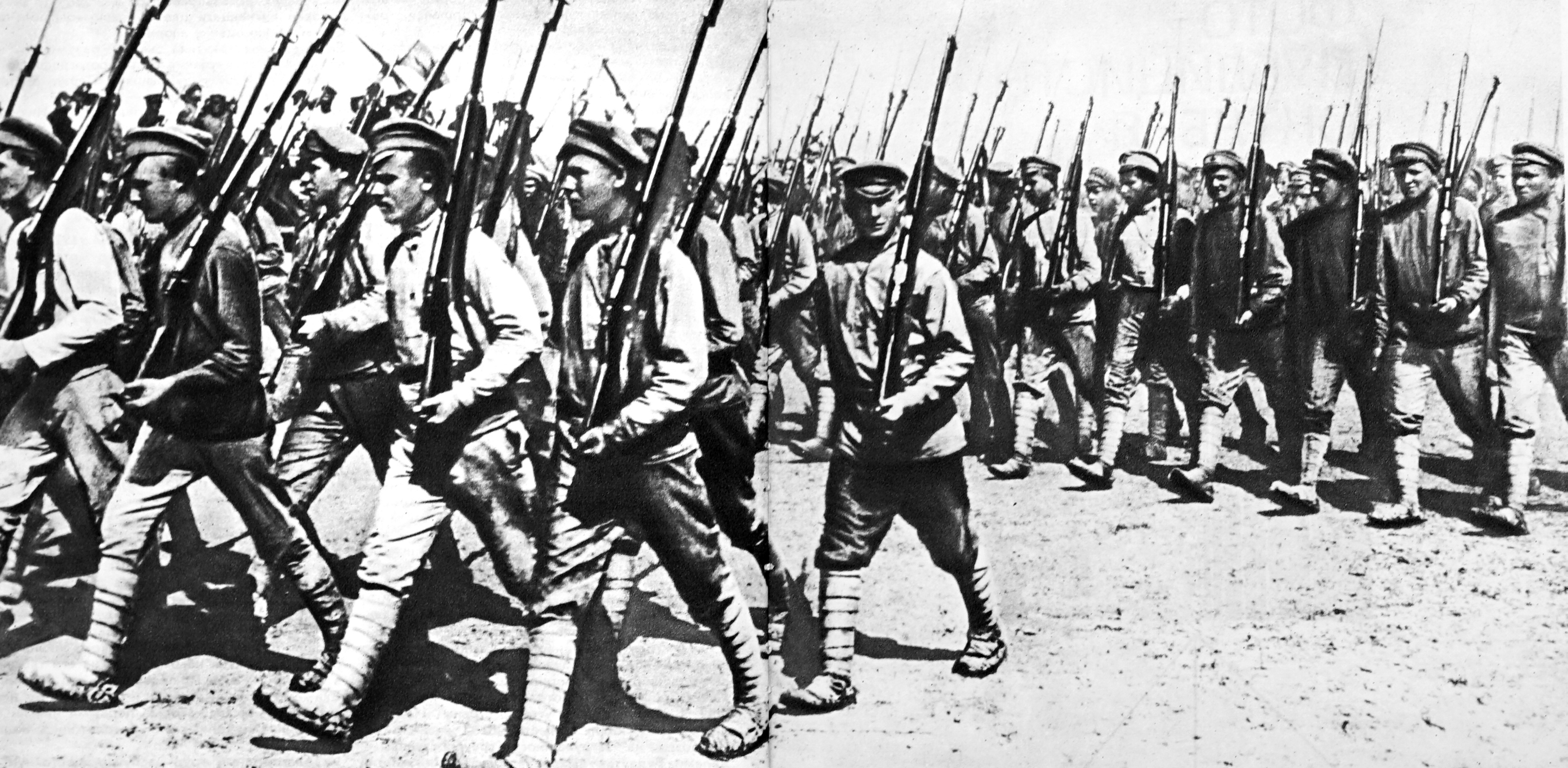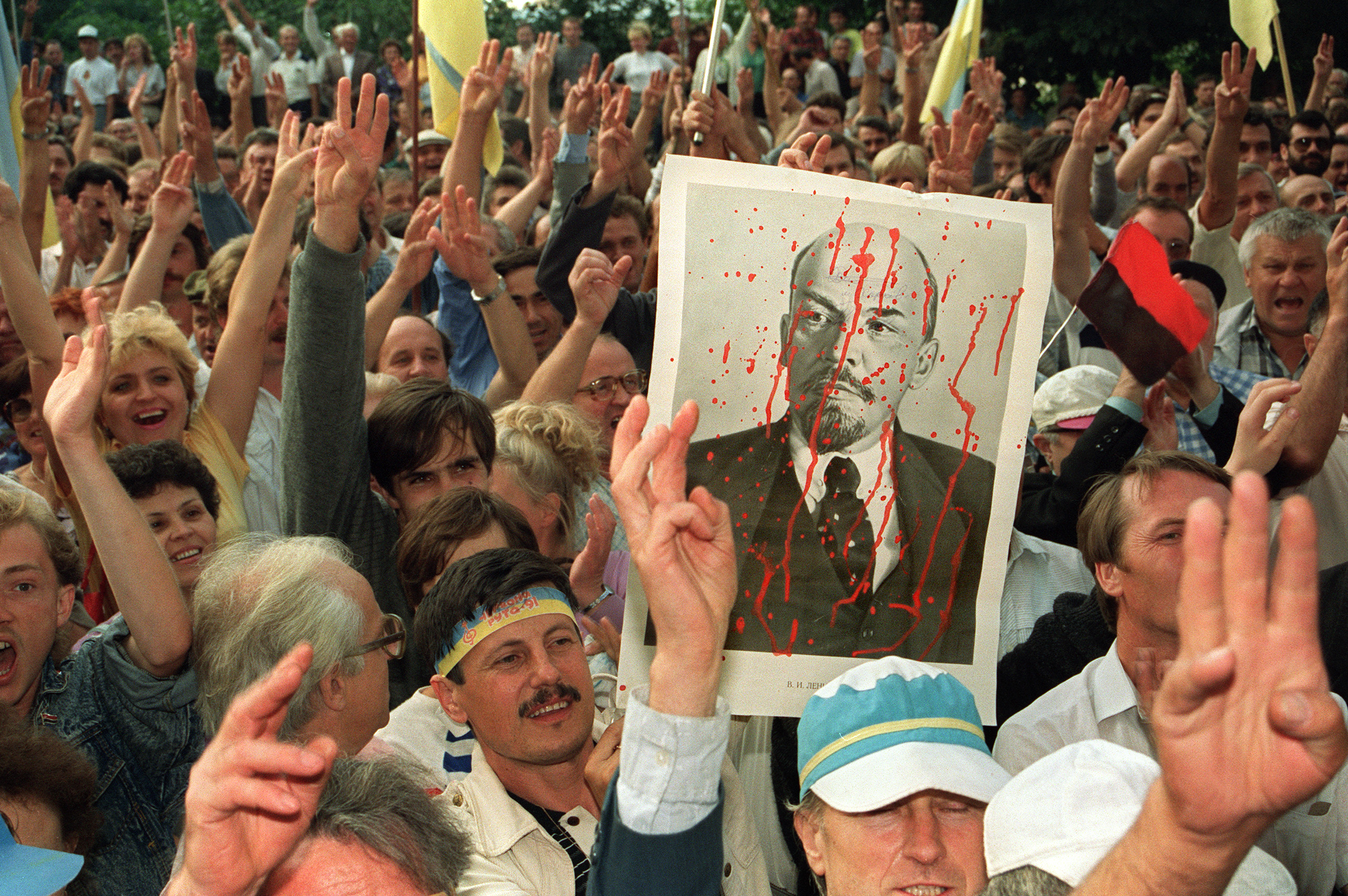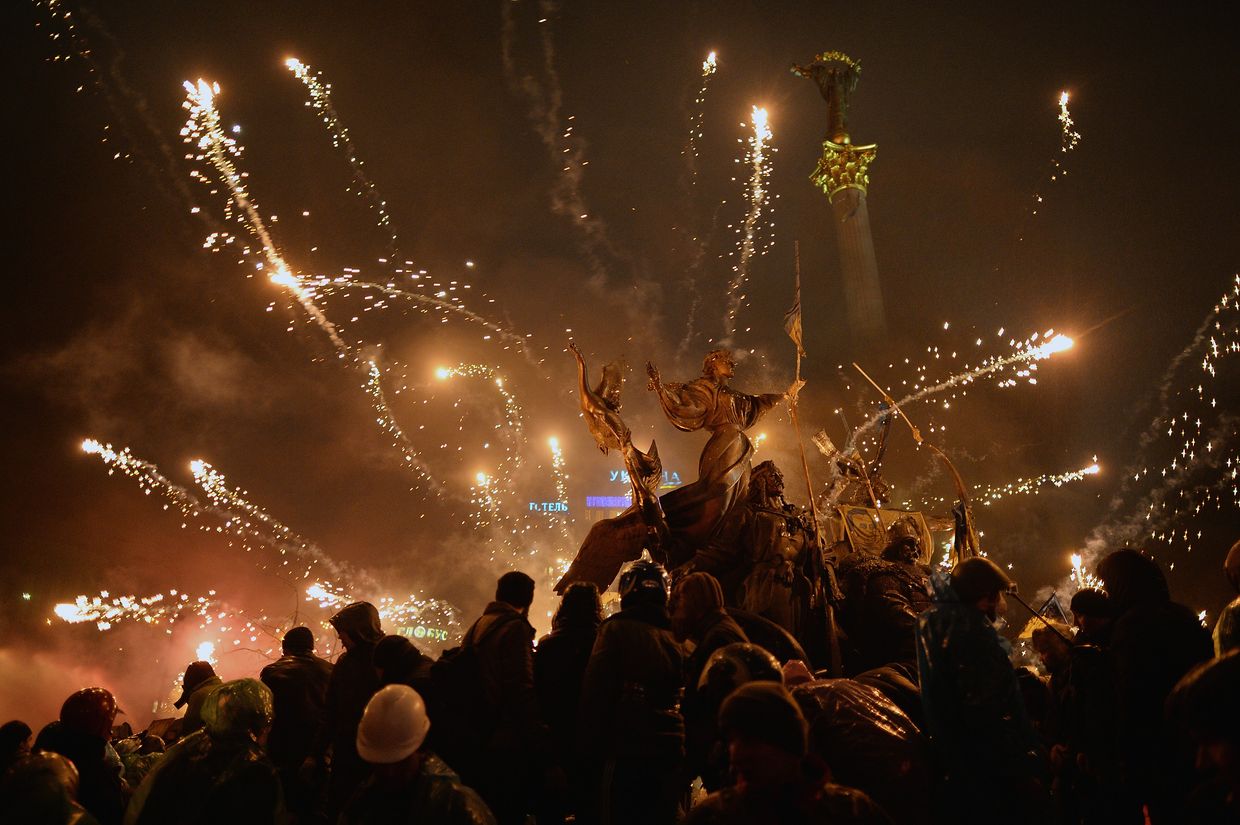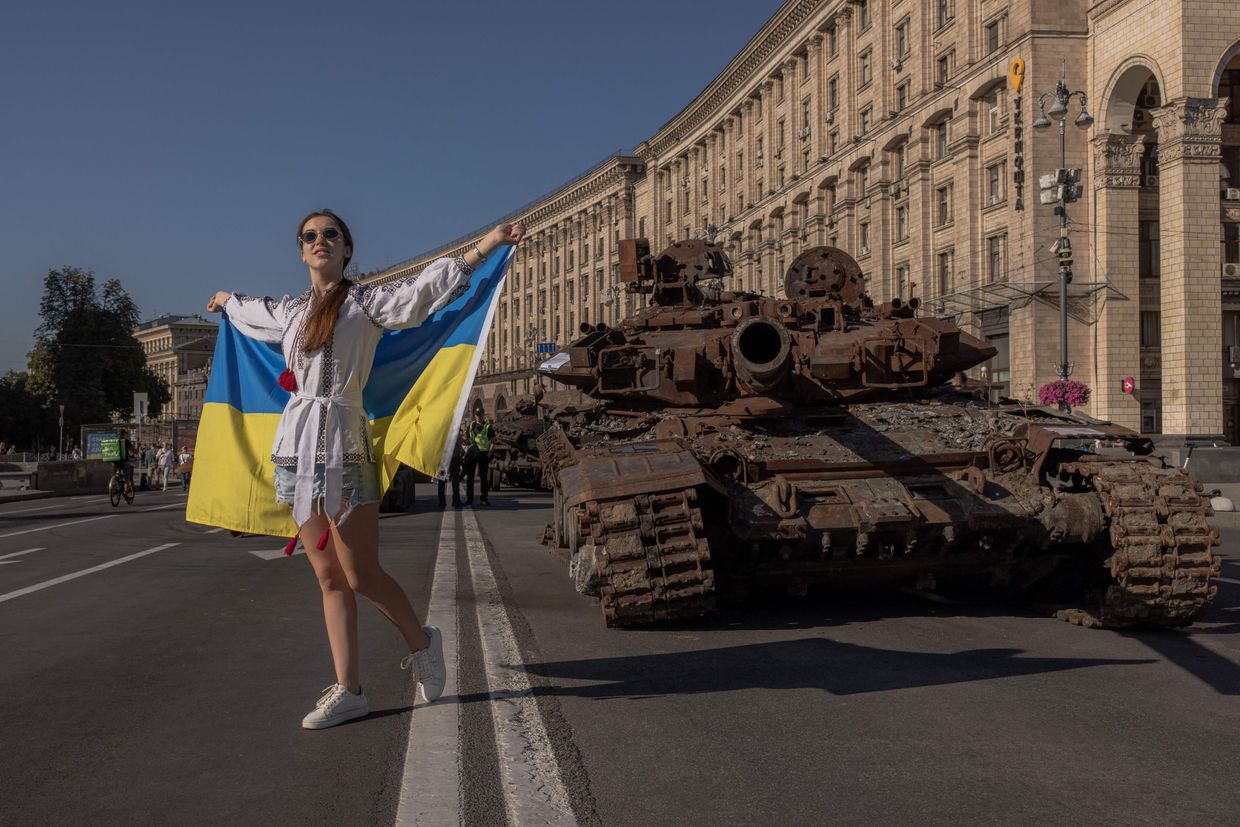On a cold day in 1918, a young student battalion began digging trenches to fortify their positions near Kyiv.
They were filled with dreams of independent Ukraine and stood up to another of Russia’s attempts to subjugate their land.
As about 5,000 Bolshevik troops came to seize Kyiv, about 500 students courageously faced them in an unequal fight now known as the Battle of Kruty.
Ukraine has existed under different names for over a millennium but was independent only for brief periods. Its territories were mostly divided between the neighboring empires such as the Polish–Lithuanian Commonwealth and the Russian Empire.
After the Russian Empire collapsed in late 1917, Ukraine used the chaotic moment to finally break free. The newly formed Central Rada government in Kyiv declared Ukraine’s independence on Jan. 22 and broke ties with Russia.
With a quickfire Russian advance looking likely, the Ukrainian state relied on volunteers to make up numbers in a decisive battle for the young nation. But the Bolshevik army was significantly larger and cities such as Kharkiv and Poltava were quickly captured.

As the Russian forces drew closer to Kyiv, a small Ukrainian contingent of students got ready. The battle ended in their defeat on Jan. 30, and Kyiv was eventually captured by the Red Army. But the fight slowed the invading forces’ advance and became emblemetic of Ukraine’s will to be independent.
Hryhoriy Pipsky, a teenager who was among the 27 students captured by the Bolsheviks and later shot dead, sang the national anthem as a sign of defiance – and other students followed.
“Ukraine is not yet dead, nor its glory and freedom,” the lyric goes. “Upon us, fellow compatriots, fate shall smile once more.”
The short-lived independent state was subjugated by the Bolsheviks and eventually turned into the Ukrainian Soviet Socialist Republic, a member of the Soviet Union, in 1922.
Ukraine’s anthem would later be banned under Soviet rule.
How did Ukraine declare independence in 1991?
It took decades for the historical anthem to be restored in Ukraine.
What followed the formation of Soviet Ukraine was a dark period, with the artificial famine known as Holodomor, World War II, and endless Soviet repressions.
Ukraine as a fully independent country emerged only decades later.
When the Berlin Wall was brought down in 1989, it was clear that the Soviet Union would soon face a bigger crisis.
With many republics already departing the Soviet Union and the waning of centralized power, it was another chance for Ukraine to break free.
Following a failed Soviet coup in Moscow, the Ukrainian parliament declared independence on Aug. 24. In a sea of blue and yellow flags, a noisy crowd gathered near the parliament building to celebrate.
Leonid Kravchuk, the head of the Ukrainian parliament who was de facto leading the country, held Ukraine’s referendum in December to formalize its independence. It passed with 90% support. That same day, he was elected president.
The Soviet Union ceased to exist later that month.
What happened after Ukraine achieved independence?
The idea of living in a free, independent nation was something new to Ukrainians at the time.
A period of uncertainty began, as the economy was collapsing.
Despite the challenges, the rise of Ukraine was a big accomplishment for the nation. Ukrainians started to increasingly explore their cultural and political identity.
For the world, the independence of Ukraine, a large state with a 52-million population then, altered the geopolitical map of Europe. The young nation was a highly developed industrial base with rich agricultural capabilities, and with nuclear weapons on its territory at the time.

Ukraine was already active in the international arena back then, with its government seeking both bilateral and multilateral recognition since August 1991. It attempted to maintain relations with Russia while also signing consular agreements with its other neighbors.
Canada and Poland were the first countries to recognize Ukraine’s independence, soon opening embassies in Kyiv.
Why does Ukraine still need to fight for independence today?
Russia’s dictator Vladimir Putin has always been open about his imperialist ambitions regarding Ukraine. He has claimed that Ukraine is a fiction created by communist Russia and that it isn’t a real country. He says that Ukrainians and Russians are one people.
Russian threats to Ukrainian sovereignty have intensified as Ukraine shifted away from Russian control and grew closer to the West.
During the 2013-2014 EuroMaidan Revolution, the Ukrainian people ousted pro-Kremlin President Viktor Yanukovych and demanded that their country pursue integration with the European Union. Losing hold of Ukraine, the Kremlin occupied Ukraine’s Crimean Peninsula and invaded the country’s eastern Donbas region.

Eight years later, on Feb. 24, Putin ordered an escalation of the localized conflict in the eastern Donbas into a full-scale war.
Nearly a century after the courageous young battalion fought back a much larger Bolshevik army in 1918, Russian forces once again began advancing towards Kyiv.
Russia planned to seize Kyiv in three to four days and install a puppet regime in the capital, a Washington Post investigation revealed.
Despite fighting against a much bigger army, the Ukrainian military held off the invading forces and kept them out of the capital until they eventually withdrew from the area.
A mass number of Ukrainian soldiers and civilians have already been killed as Russia continues to wage war in Ukraine. The Kremlin continues to seek to extinguish Ukrainian statehood aspirations.
Independence is something that millions in Ukraine have sacrificed their lives for and what its people are still fighting for today.
How do people celebrate Independence Day in Ukraine?
Independence Day, which comes the day after National Flag Day on Aug. 23, is a national holiday in Ukraine. But unlike in many other European countries, most places such as shops, restaurants, and cafes are open till late in the evening on this day.
Though everyone has their own way of celebrating Independence Day, many Ukrainians spend it with their friends and family. There are various types of events held across the country, from a grand concert with well-known artists to a rave party event.
Kyiv’s main Independence Square, Maidan Nezalezhnosti, and almost every corner of central Kyiv are usually bustling with crowds of people celebrating the day. A Ukrainian national salute, “Slava Ukraini, translated as glory to Ukraine,” can be heard across the city. People wear vyshyvankas, traditional Ukrainian embroidered shirts or dresses, and carry Ukrainian flags.

When Ukraine celebrated its 30th anniversary in 2021, it held a massive military parade where units of the Ukrainian army, tanks, armored personnel carriers, and air defense systems marched along the central street of Kyiv. In the southern city of Odesa, a parade of Ukrainian Navy units took place in the Black Sea port.
In 2022, amid Russia’s ongoing invasion, mass gatherings were banned in Kyiv and many other cities have taken precautions to protect their residents from the possible threat of Russian missile strikes. But Ukraine still found a way to enlighten the public.
Destroyed Russian tanks and military vehicles were lined up across Khreshchatyk Street in Kyiv, where many locals have visited for a photo opportunity and to praise the Ukrainian military’s achievements.
As the full-scale war reached the six-month mark, Ukrainians were once again reminded of the price of defending freedom in their country.












